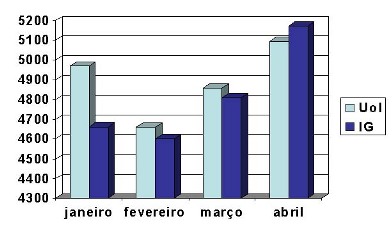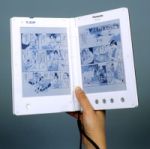What is a computer?
I know what you think a computer is. You picture in your mind one of today’s PCs.
And you’re right, that is a computer. But that’s not what a computer has to be.
 The first computer, The first computer,
ENIAC, was produced in the 1940s and was mainly a collection of vacuum tubes and wires. "Software" meant stringing the wires among banks of tubes, which gave the machine an equation to solve. The tubes would flash on, counted as a "one," or off, counted as a "zero." (The University of Pennsylvania library offers an online exhibit on the ENIAC at http://www.library.upenn.edu/exhibits/rbm/mauchly/jwmintro.html.)
 IBM’s first true computer, the 701, was introduced to the market in 1952 and brought the first magnetic storage unit. The first true "home computer," Simon, was actually introduced in 1950, and featured a collection of switches, lights, and relays. IBM’s first true computer, the 701, was introduced to the market in 1952 and brought the first magnetic storage unit. The first true "home computer," Simon, was actually introduced in 1950, and featured a collection of switches, lights, and relays.
By the 1960s, at the height of the IBM monopoly, punch card readers had become the main way for reading programs into computers, with printers as the main output device. When Gordon Moore wrote his famous "Moore’s Law" article in 1965, he illustrated it with a computer being sold in a department store. The computer is a box, with no input or output shown.
Most of the first personal computers, in fact, like the Mark 8 and MITS Altair, mainly consisted of blinking lights and magnetic storage. It was the Apple II, introduced in 1977, that produced the first collection of interfaces we associate with personal computing – magnetic disk storage, a typewriter for input, and a TV (a required option) for quick output when the printer wasn’t being used.
The point here is that a computer doesn’t have to be what you think it is. A computer is simply a digital system for processing data. Software is a method for processing the data. Input can come from anywhere and output can go to anything.
Many people say they don’t have a computer, or they don’t use the Internet, because they don’t have a PC in their home with a typewriter for input, a TV for output, and a tape recorder for storage. But they’re wrong.
In fact, PCs are everywhere.
If you have a new car, chances are it contains a lot of computer chips. Computers are used to control your brakes in a skid, to keep your engine running right, and for dozens of other functions. (Many cars let you customize your ride by adjusting the way the chips work.) In fact, most modern cars use entire computer networks and one of the big issues in the car business today is when those networks will become wireless.
Airplanes are even more heavily computerized, to the point where they practically fly themselves. Bread makers are based on computer chips that tell them when to mix and when to let the dough rise. All home entertainment systems are based entirely on computer chips. Your washing machine and dishwasher have computer chips in them, and so does your refrigerator. All the electronics in your TV set was replaced by a chip long, long ago – the only reason you don’t notice is because, thanks to microelectronic technology, the TV no longer breaks down.
Why don’t these computers count? It’s because they’re not general-purpose machines. They are embedded in larger devices, they run a single program defined by the machine they are in. You don’t think about the computer, you just use the machine it is embedded in.
All computers, however, from the single chips in your washing machine to the global Internet itself, have a few functions in common:
- Processing – All computers move data through a set of registers and processors that are based on adding machines. Bits are lined up in registers, instructions are delivered inside the machine, and the bits are processed. What the bits mean, what the instructions mean, what the input and output mean – they’re all up to you, their programmer.
- Storage – All computers can store data as it is moved in-and-out of the processing system. As processor chips have become faster more of the memory they need in order to store data is on the chip, rather than sitting on a separate memory chip. Data can either be stored on chips, or on magnetic media, or on optical media. What the data means, again, is up to the person who programmed the computer
- Input – All computers have methods for getting instructions into them. On your oven these may be a simple set of buttons for temperature, time, and the type of cooking you want to do. On your PC, this is a keyboard and mouse.
- Output – All computers have methods for holding the results of what they did. The washing machine’s output is clean laundry. The output of the PC I’m using now may be this finished book, transmitted via a network to a printer, and put into your hands by a computerized binding system, computerized inventory systems, and (perhaps) your decision to order this book over the Internet.
The first step in understanding the World of Always On, then, is to accept that what you think of as "a computer" is only one paradigm for computing. Wherever you find processing, storage, input and output under software control, you have computing. Your interface may be a steering wheel, a TV remote, or the dial of your washing machine. But computing is going on all around you. |













 The first computer,
The first computer,  IBM’s first true computer, the
IBM’s first true computer, the 








